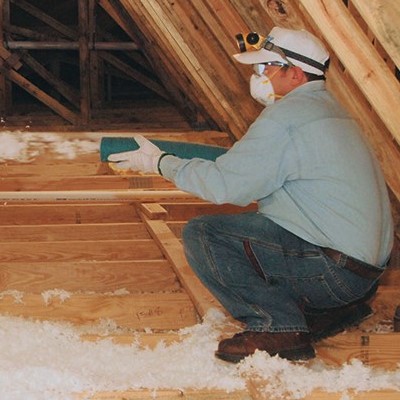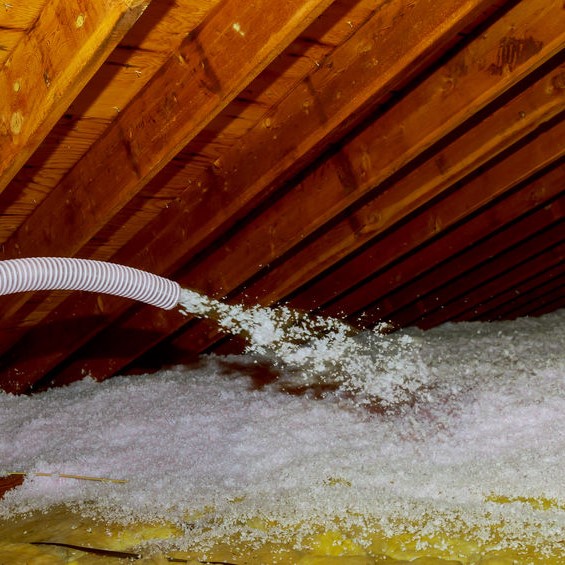
Is blown insulation good?
Blown-in insulation for attics has become more popular than the rolled batting insulation over the past few years, and for good reason. Blown-in insulation fills the areas between ceiling joists and existing wall studs, getting those areas that rolled insulation can’t reach. Additionally, as blown-in insulation settles, it seals up gaps and spaces, those sneaky spots that cold air finds its way around. Another disadvantage to blown-in insulation is wall obstructions like drainpipes, electrical outlet boxes, and other barriers like stability studs.
Insulation that comes in smaller chunks makes for a better choice. The contractor, holding large holes, blows insulation chunks into your attic. That air blows it into the furthest crevices, cracks, and corners.
You can choose cellulose or fiberglass, both insulate the same, and both have advantages and disadvantages. Cellulose blown-in insulation is made from recycled newspapers and fiberglass blown-in insulation is a quick renewal resource according to some experts.
How thick should blown attic insulation be?
To get the most benefit from blown in insulation, you should have no less than ten inches and a maximum of fourteen inches. Choose a high R-Value for the best thermal performance, experts recommend R-38.
Can you put too much insulation in your attic?
Yes, and that may seem strange to some. Over-insulating your home will seal it too tight, trapping moisture. Along with a high R-value and ample thickness of insulation in the attic, it also needs proper ventilation. Because warm air rises, it build up moisture and that can lead to mildew and mold building up, affecting the indoor air quality of your home.
Let us clarify – if you find mold, this isn’t an automatic assumption your attic is over-insulated. It is only one of many things that can cause mold, and if your home is like most homes, your attic is probably under-insulated. If you find mold, you will benefit by having a home inspection performed. Dampness and mold can be from a malfunctioning HVAC, your sump pump is broke, a leaking water pipe, etc.
How long does blown in insulation last?
Fiberglass blown-in insulation can have a lifespan of up to 100 years. Fiberglass batt insulation has a life expectancy of 20 years maximum. Cellulose blown-in insulation is eco-friendly, blocks air more effectively than some other insulation, and offers a level of fire protection. However, cellulose blown-in insulation is made from recycled materials, and it will begin to degrade as early as 15 years up to 30 years.
Can you do blown insulation yourself?
Yes, you can, and it is quite a savings. To do your own cellulose blown-in insulation, will cost you around $500 depending on the size of your house. For a professional to do cellulose blown-in insulation, it cost you up to $2,000, again, depending on the size of your house. These prices are estimated for a 1,200 square foot house.
The job is dusty and sweaty, and with a second person helping you, you can expect it to be a two-day job. So, doing it yourself, you’ll save roughly $1,000 and then the savings on your energy bills will up as much as 25 percent! Don’t forget to check for tax credit too.
So, blown in insulation, is it safe?
Fiberglass blown-in insulation, after it has been professionally installed, is safe. If you’re doing your own insulating, you’ll want to dress appropriately in long sleeves, gloves, masks, and eye gear. Cellulose blown-in insulation is safe too. This chemically treated recycled paper insulation is treated with permanent fire resistance and is approved by all building codes.

Which is better, blown in insulation or spray foam?
Blow-in insulation won’t expand like spray foam insulation, which cuts back on its efficiency if you’re doing your own installation. A professional that has the proper equipment, experience, and training knows the precise method to get blown-in insulation to all the corners of the attic. Blown-in insulation is easier to install in existing homes instead of in construction.
Spray foam insulation is more expensive, for a 1,200 square foot home, you’re looking at a $4,000 job minimum, and it isn’t that much more energy-efficient than other types of insulation. The upsell to spray foam is the moisture resistance it offers.
With blown-in insulation and mice, they will chew through your home’s ductwork and make a nest inside the blown-in insulation. The best method of keeping mice and other critters out of your attic and blown-in insulation is to block any and all entrances around your home’s exterior. You should eliminate anything around your home that attracts mice, like wood stacks. Call (817) 588-2050 today for blown-in insulation in Arlington, TX.
